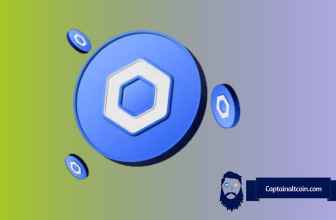
PayPal, a global payments giant, has announced its foray into the cryptocurrency space by launching its own dollar-pegged stablecoin named PayPal USD (PYUSD).
This move is seen as a significant expansion of PayPal’s reach into the digital assets space, considering its existing services that allow U.S. customers to buy, sell, and hold select cryptocurrencies. The new stablecoin, PYUSD, will be redeemable for $1, ensuring its stability against the U.S. dollar.
USDT and USDC’s Troubled Waters
While PayPal’s entry into the stablecoin market is significant, it’s essential to understand the current dynamics of the stablecoin ecosystem. Tether (USDT) and Circle’s USDC are two dominant centralized stablecoins. However, recent events have put these stablecoins under scrutiny:
- USDT’s Exploitation of Circle’s Reserves: Tether began exploiting Circle’s reserves in a predatory manner. This involved minting USDT, swapping it for USDC, cashing out the USDC, and then using the cash to back the newly minted USDT. This strategy drained Circle’s cash reserves, bolstering Tether’s position. As a result, Tether’s market capitalization increased by $15 billion, while Circle witnessed a corresponding decline.
- USDT’s Declining Value on Huobi: Adam Cochran, a renowned Twitter analyst, highlighted the potential reasons behind Tether’s sell-off. He suggests that the insolvency of Huobi, a prominent cryptocurrency exchange, is a likely cause. Binance began selling off USDT in bulk, coinciding with the questioning of Huobi executives and Tron personnel by the police. Cochran also points out that Justin Sun’s stUSDT, which claims to be USDT sitting in government bonds, is largely held by Sun or Huobi directly. This raises concerns about the legitimacy of stUSDT and its actual backing.
Are USDT and USDC Now in Trouble?
Given the current dynamics, there’s speculation in the community on whether the launch of PayPal’s stablecoin could capitalize on the challenges faced by USDT and USDC:
- Trust and Credibility: PayPal, with its global reputation and extensive user base, could offer a more trustworthy and reliable stablecoin option compared to USDT and USDC, especially given the recent controversies surrounding them.
- Market Dynamics: If PayPal’s stablecoin gains traction, it could potentially shift the balance in the stablecoin market, posing a threat to the dominance of USDT and USDC.
- Strategic Partnerships: PayPal’s partnerships with financial institutions and its existing infrastructure could provide PYUSD with an edge, making it easier for users to adopt and integrate into their financial activities.
In conclusion, while it’s too early to determine the exact impact of PayPal’s stablecoin launch on USDT and USDC, the current challenges faced by these stablecoins provide an opportune moment for PayPal to establish its dominance in the stablecoin market. As the narrative unfolds, the crypto community will be keenly watching the developments and the potential reshaping of the stablecoin landscape.







